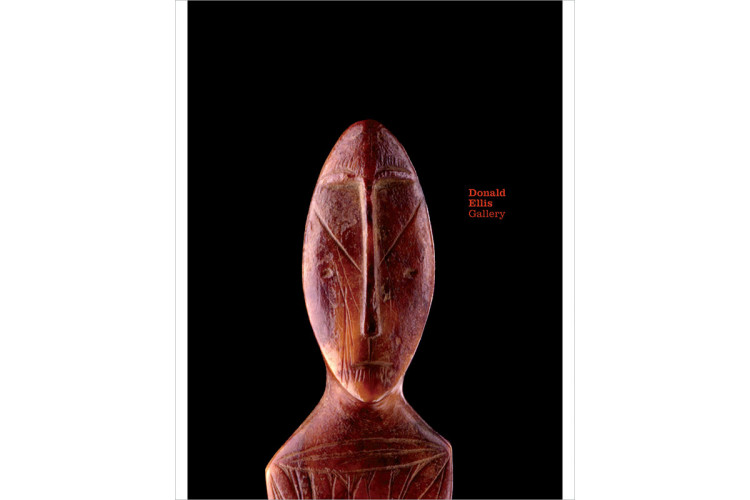
2004
$30.00 USD
ca. 1790-1820
wood, paint, abalone shell, hide
length: 6"
Inventory # N3155
Sold
Heye Foundation, New York, NY, No. 1/4216 collected by George T. Emmons, deaccessioned 1969
John J. Klejman, New York, NY
George and Rosemary Lois, New York, NY
Donald Ellis Gallery catalogue, 2004, pgs. 2-3
Museum of Anthropology and Ethnography, Leningrad, No. 2448-17 – See: The Far North, Collins, Laguna, Carpenter and Stone, Washington: National Gallery of Art, 1973, pl. 319
Museum fur Volkerkunde, Munich, No. 91.126 – See: Donnervogel und Raubwal: Die indianische Kunst der Nordwestkuste Norkamerikas, Haberland, Hamburg: Hamburgisches Museum fur Volkerkunde und Christians Verlag, 1979, pl. E-I
Museum of the American Indian, Heye Foundation, No. 9/8031 – See: Yakatut South: Indian Art of the Northwest Coast, Wardwell, Art Institute of Chicago, 1964, pl. 43
This superbly carved forehead mask artfully captures the essence of a bear image. Skillfully carved and richly embellished, this mask represents an inherited crest of the owner’s family and clan. Valuable family crests such as this would be worn as a dramatic display of self-identity and pride in ceremonial gatherings often called feasts or potlatches.
The field collector George T. Emmons acquired this mask from the Nishga, a Tsimshian subgroup, on the Nass River. He identified it as “representing a mythical sea bear”, information likely supplied by the mask’s Nishga owner. The bear is readily identifiable by the short snout, bared teeth and protruding tongue. Beyond the carefully crafted image of the bear’s head, however, there are no surviving characteristics that suggest the sea aspect of the creature. Elements that completed the sea bear image may have been attached to the back edge of the mask at one time. Painted formline designs of pectoral fins, feet or the sea bear’s body may have been included. A narrow vertical slot cut in the back of the mask possibly held a wooden dorsal fin.
The sculptural style of this mask appears to agree with the Nishga designation given by Emmons, although his attribution would have been largely based on where he acquired it. Northwest Coast peoples often possess objects made by other First Nations, the result of trade, intermarriage or warfare. The appearance of this sculpture also suggests the possibility of Tlingit manufacture, as it has similarities to some early works from this more Northern group. The relatively xfand handling of the eye sockets, however, strongly suggest a Nishga attribution.
With arresting artistry and visual power, this remarkable mask conveys the solid strength and fearsome authority of the largest carnivore of the Northwest Coast.

$30.00 USD